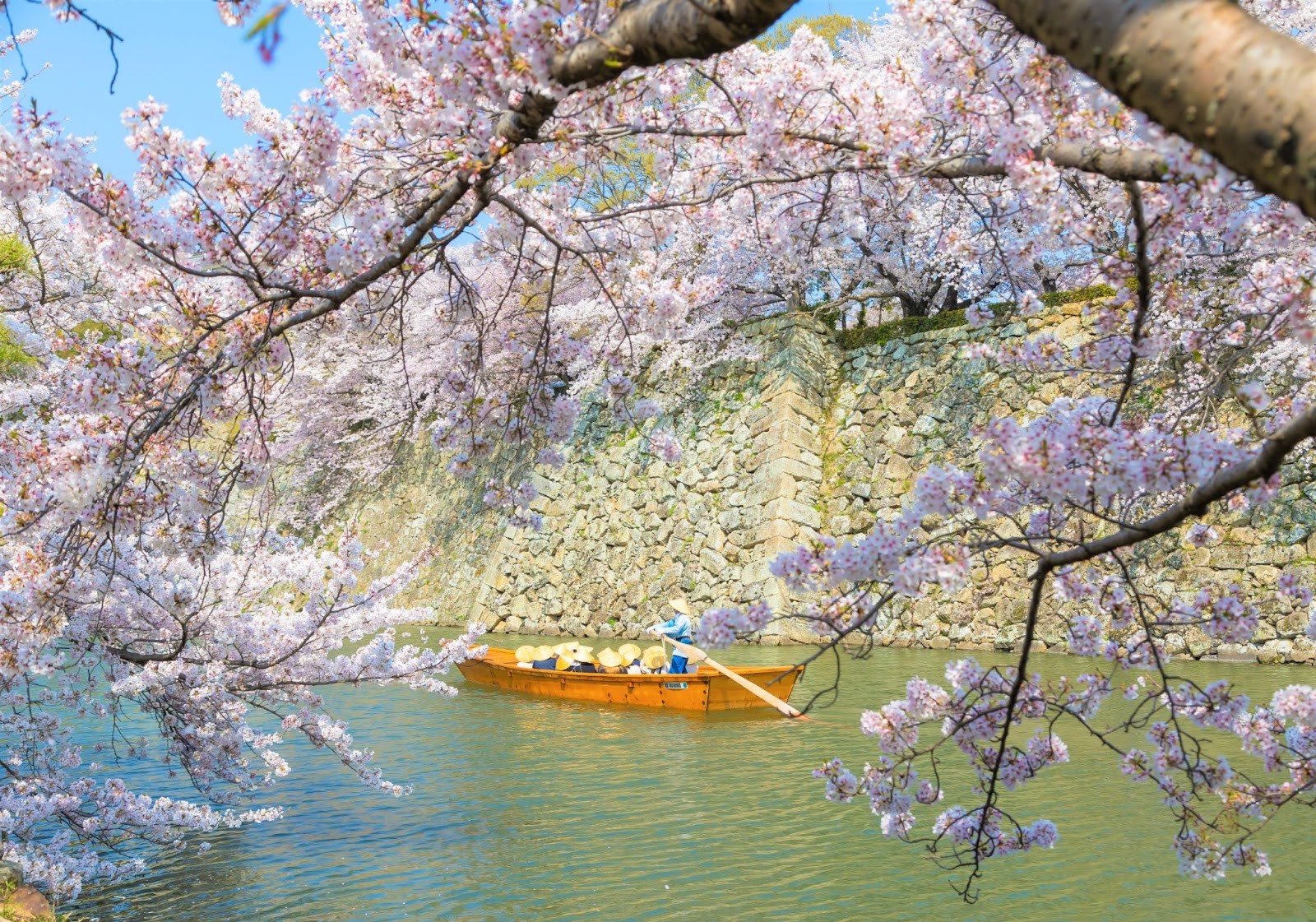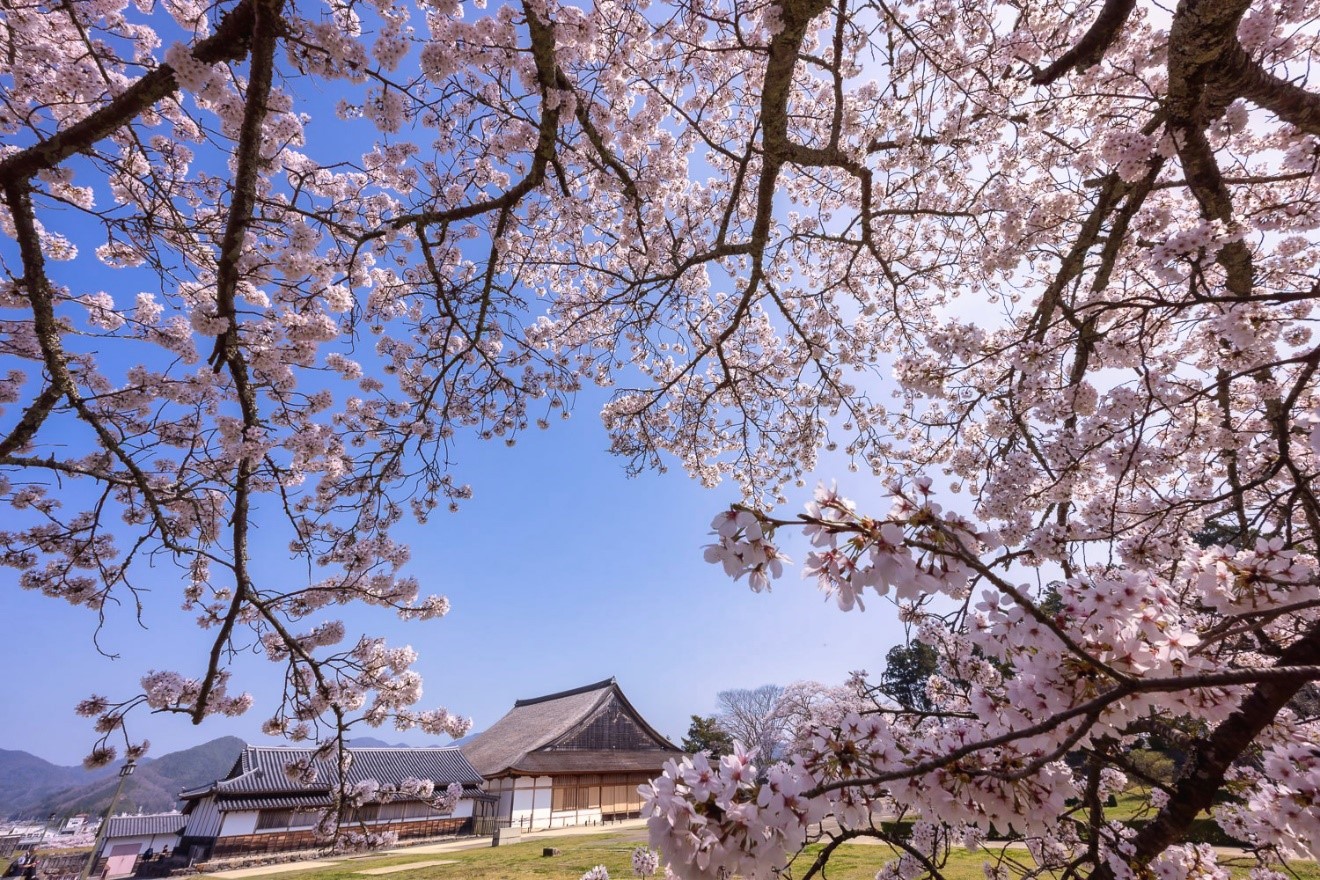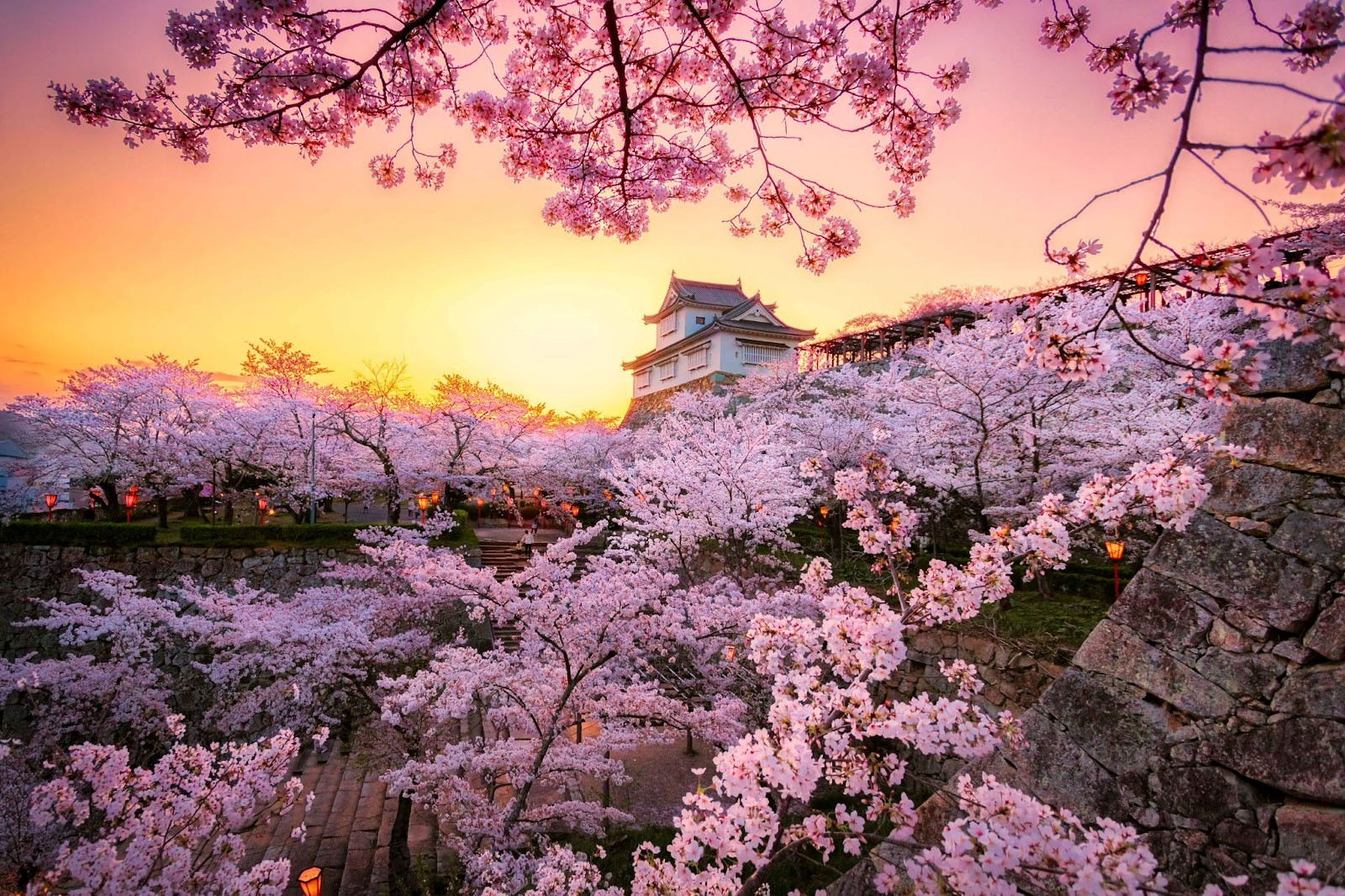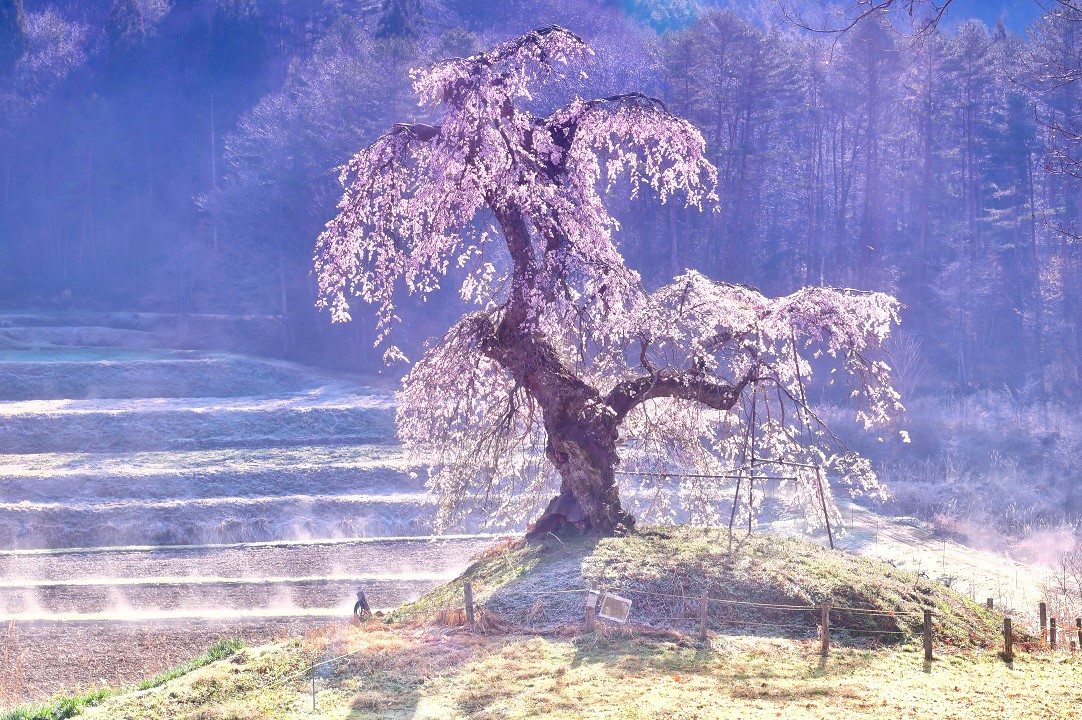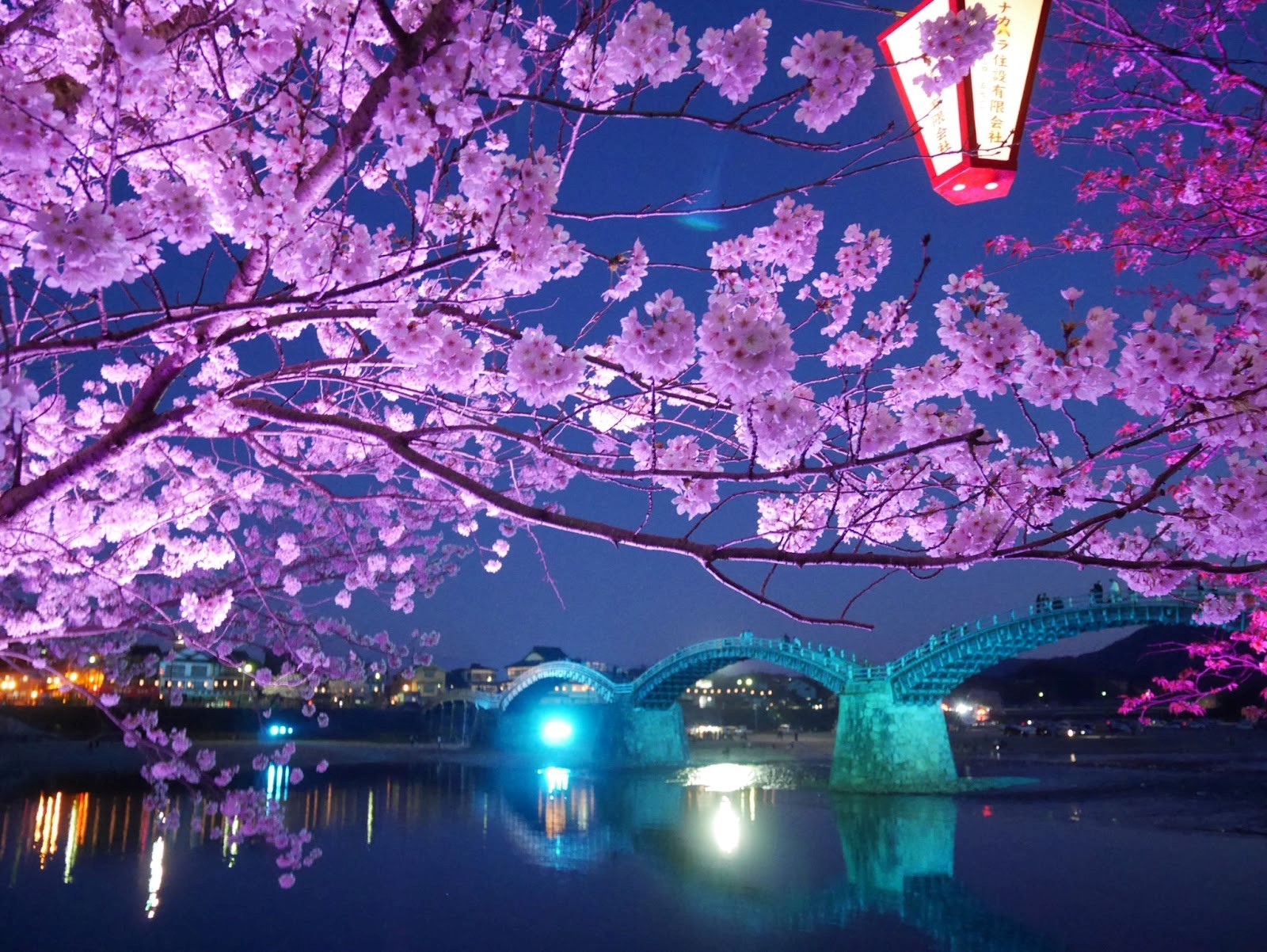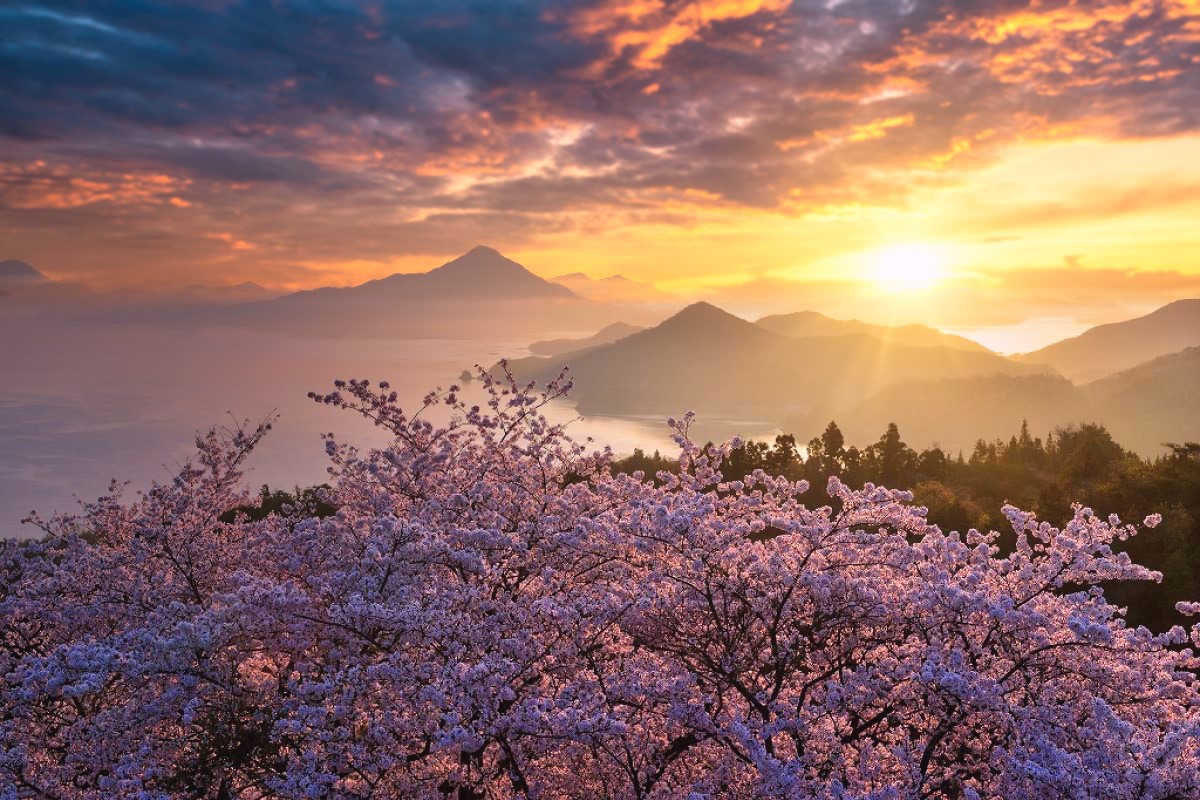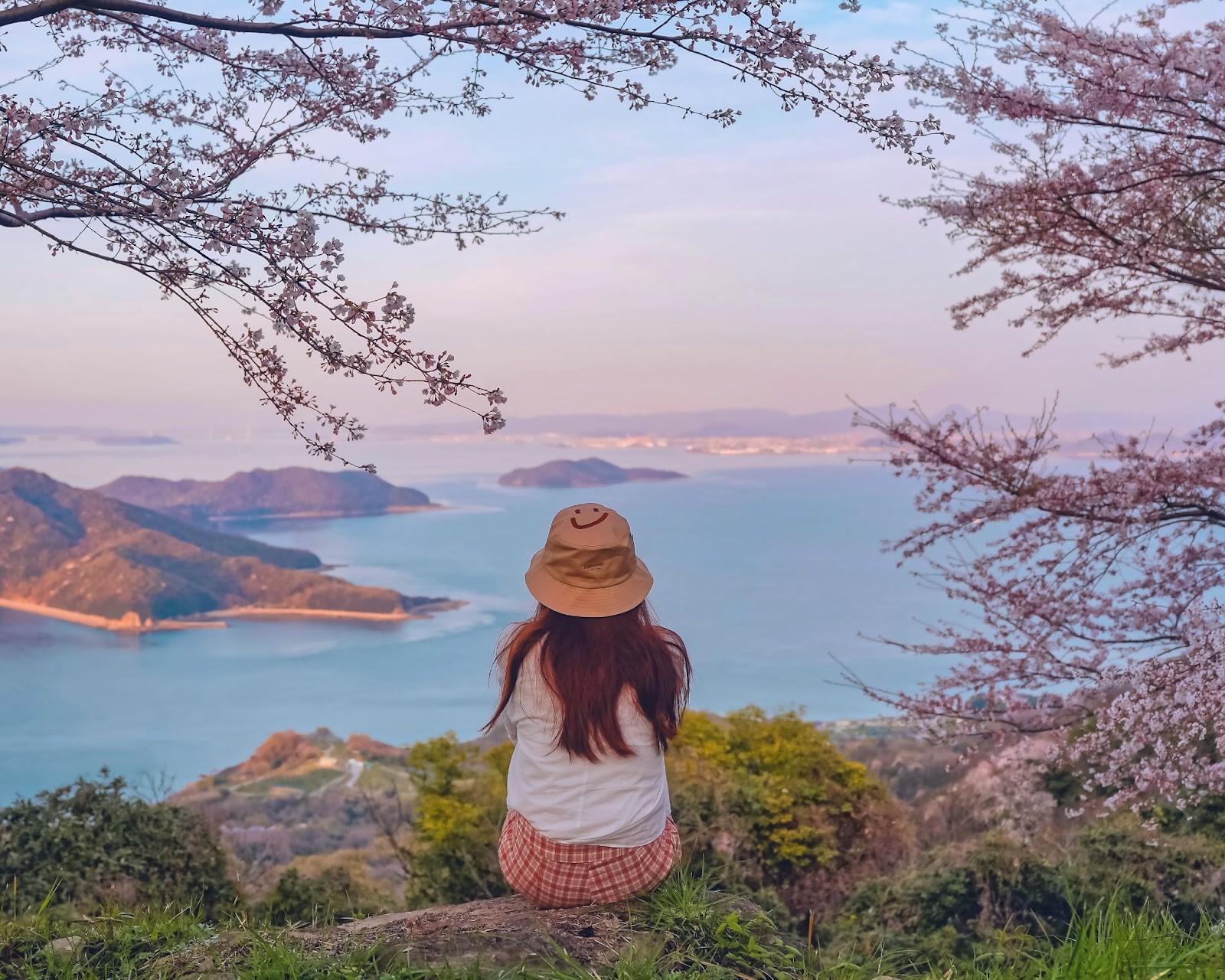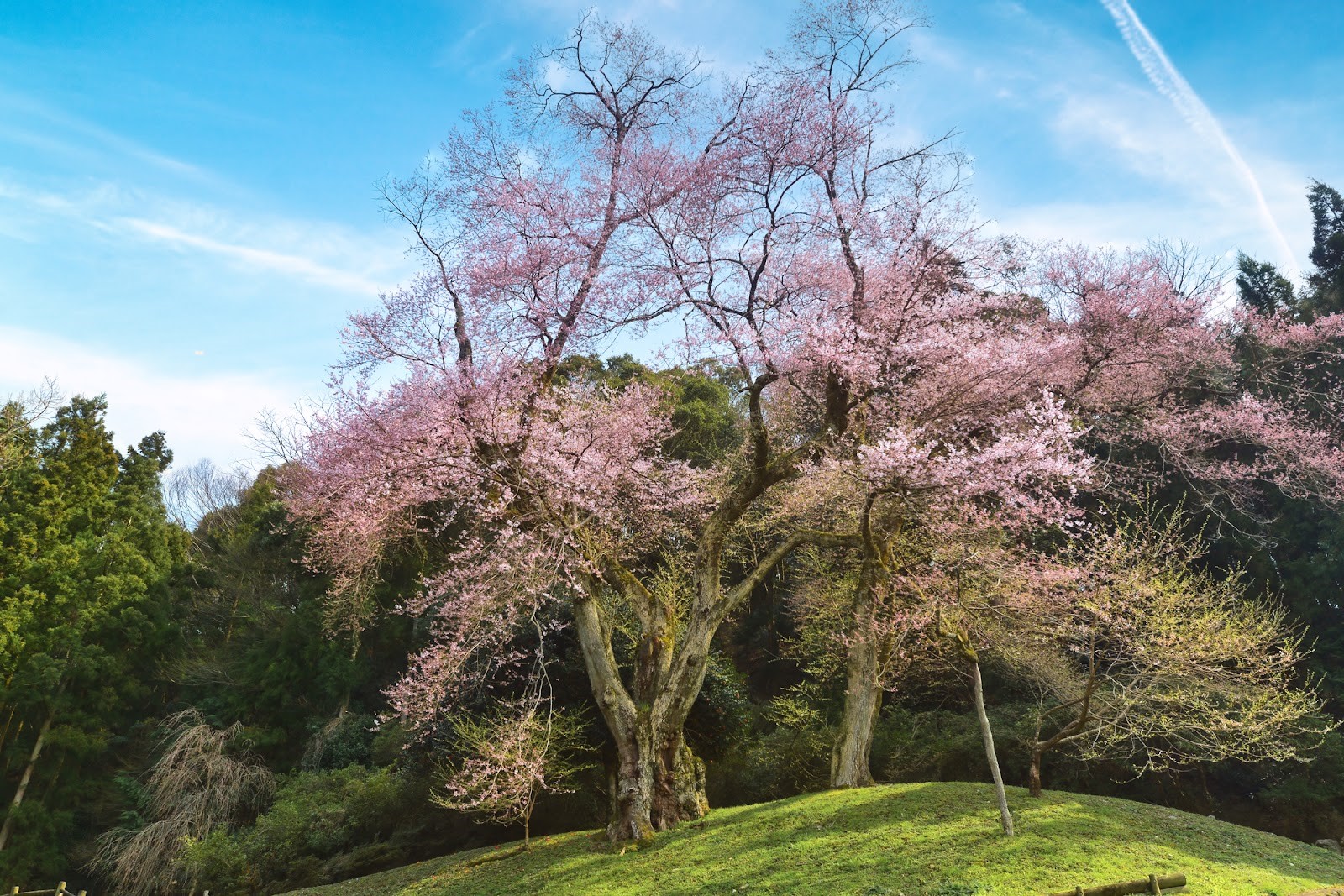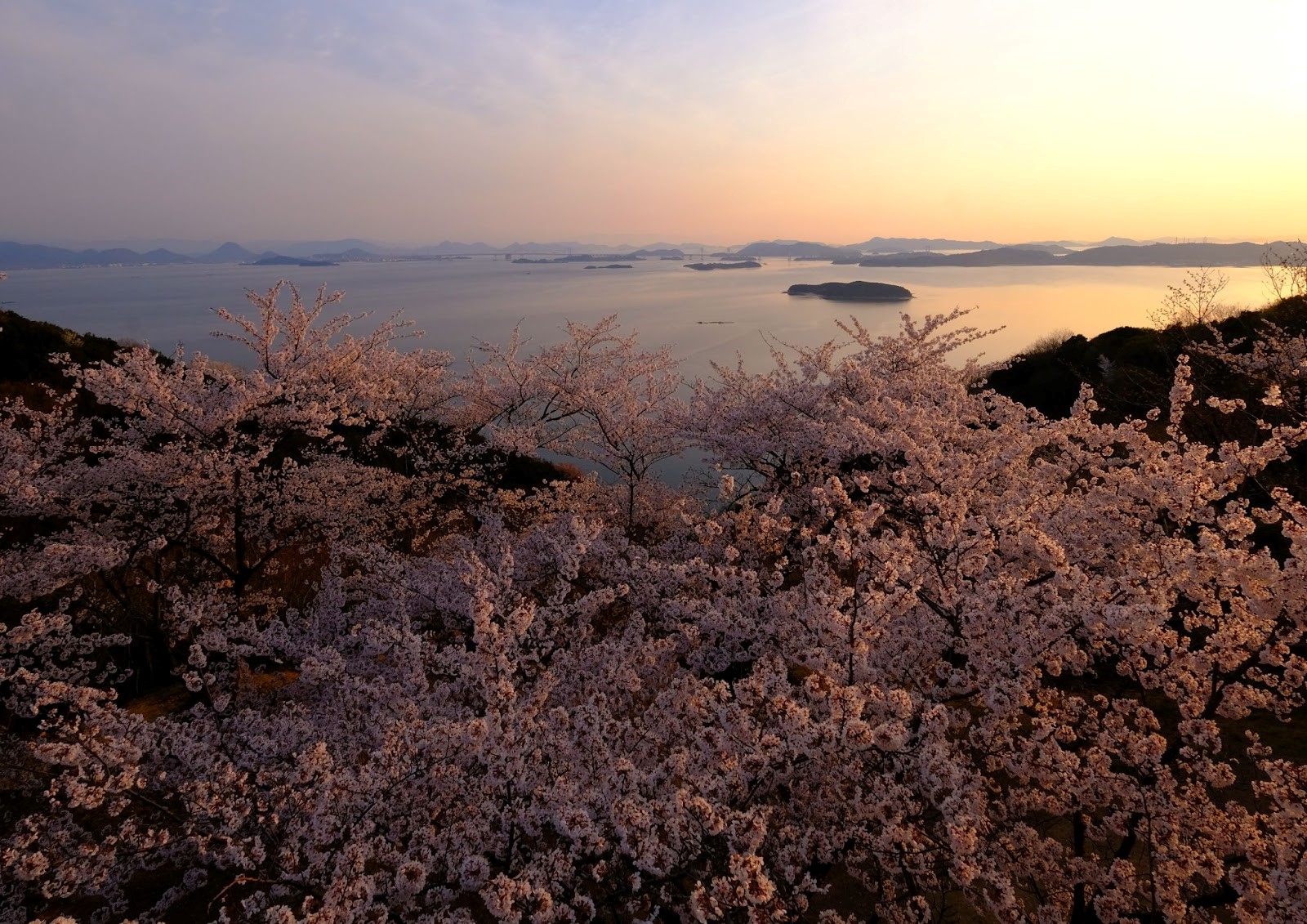It’s that time of the year again! In just a few short weeks, Japan’s cherry blossoms will emerge from their winter slumber, blanketing the country in a fleeting, ethereal beauty.
Their captivating allure in 2024 is expected to draw unprecedented crowds, continuing the trend set last year when Japan welcomed a surge of overseas visitors for the first full cherry blossom season since the pandemic. With international arrivals consistently breaking records all of 2023, the challenge of over-tourism is becoming increasingly evident.
Even during non-peak periods, Japan already grapples with the influx of visitors. In the Setouchi region, renowned destinations like Miyajima are often overwhelmed, stretching the existing tourism infrastructure to its limits. The cherry blossom season only heightens this dilemma, with its unique blend of natural beauty and cultural festivities drawing even larger crowds.
When it comes to places to see the cherry blossoms, Setouchi region is truly blessed with variety. Though there are indeed a number of mainstream spots like Himeji Castle and the area near the Atomic Bomb Dome, Setouchi has a lot of well kept secrets too.
So, in the spirit of combating over-tourism, here are seven spots to consider for cherry blossom viewing this year for each of the prefectures in the Setouchi region.
① Hyogo Prefecture: Sasayama Castle
Sasayama Castle, located in Sasayama City, Hyogo Prefecture, is a historically significant site built under the orders of Tokugawa Ieyasu. Unlike the more grandiose Osaka and Himeji Castles, Sasayama Castle is known for its rustic charm and tranquil atmosphere. Reconstructed in 2004, it retains magnificent stone walls and features fine Edo-period paintings, offering a glimpse into Japan's feudal past.
While it’s normally off the beaten path, Sasayama Castle transforms into a spectacular viewing spot during cherry blossom season. The castle grounds, surrounded by about 1,000 cherry trees along the moat, offer a stunning display of blooming cherry blossom trees. This creates an enchanting atmosphere, combining historical architecture with natural beauty, making it a must-visit destination for cherry blossom enthusiasts who are looking for something new.
Reaching Sasayama Castle is relatively straightforward. Visitors can take a 17-minute bus ride from Sasayamaguchi Station on Fukuchiyama Line to the Nikai bus stop. From there, it's a brief five-minute walk to the castle. This access route makes Sasayama Castle an ideal destination for those looking to experience the serenity and beauty of rural Japan, away from the hustle of larger cities like Kobe and Osaka.
Note that Sasayama Castle combines well with a trip to Kinosaki Onsen. For more information, see this route on our website for a model course.
② Okayama Prefecture: Tsuyama Castle
Tsuyama Castle, nestled in Kakuzan Park on a small hill in Tsuyama City, northern Okayama Prefecture, stands out for its historical significance. Completed in 1616 by Mori Tadamasa, the first lord of the Tsuyama Clan, the castle is recognized among the Top 100 Historical Parks in Japan. Although its original structures were demolished, the largest watchtower was reconstructed in 2005, preserving the castle's architectural heritage, including its remarkable turrets.
All across Japan, Tsuyama Castle is a renowned cherry blossom viewing site, particularly spectacular during late March to mid-April. The castle is adorned with approximately 1,000 Yoshino cherry trees, creating a breathtaking landscape. This scenic beauty has earned it a place among the Top 100 Cherry Blossom Spots in Japan. During the Tsuyama Cherry Blossom Festival, visitors can enjoy the traditional paper lanterns, local delicacies, and a tea ceremony under the blossoms.
Reaching Tsuyama Castle is convenient for travelers. It's just a 10-minute walk from Tsuyama Station, which is about 90 minutes by train from Okayama Station. This accessibility makes it a feasible destination for both local and international visitors looking to immerse themselves in the splendor of cherry blossoms at one of Western Japan's most popular cherry blossom spots.
③ Hiroshima Prefecture: Nagasawa no Shidare-zakura
This next suggestion for Hiroshima is one that is way off the beaten path. Known as the Nagasawa no Shidare-zakura, this cherished cherry tree is approximately 430 years old and stands 11 meters tall with a trunk circumference of 3.15 meters. Designated as a natural monument by the town, this weeping cherry tree is believed to have been originally planted as a marker for an ancient tomb. The tree has been carefully preserved and is a testament to the region's commitment to protecting its natural and historical treasures.
The best time to visit Nagasawa no Shidare-zakura for cherry blossom viewing is typically from mid-April to late April. The exact timing may vary depending on the climate. During the cherry blossom season, the tree’s spectacular weeping branches create a breathtaking and serene ambiance, making it a must-visit for any and all cherry blossom enthusiasts who are seeking a tranquil nature experience in the countryside of Hiroshima.
Unfortunately, the Nagasawa no Shidare-zakura can only be reached by car and is approximately a 50-minute drive from the Chugoku Expressway's Togouchi Interchange. As of 2024, there seems to be no direct public transportation access to this location so visitors may need to consider other means, such as taxis or rental cars, to visit this spot. That said, the difficulty in reaching the Nagasawa no Shidare-zakura means that travelers will largely have the tree to themselves.
④ Yamaguchi Prefecture: Iwakuni’s Kintaikyo
Kintaikyo Bridge in Iwakuni is a remarkable example of traditional Japanese architecture and engineering. This five-arched wooden bridge, constructed using various types of wood including cypress, chestnut, and oak, spans the Nishiki River and changes its aspect with the seasons. Originally built in 1673, the bridge was reconstructed in its original design after being washed away by a typhoon in 1950. It is considered one of Japan's three great bridges and has been designated as a Site of Scenic Beauty, earning two stars in the 2013 Michelin Green Guide to Japan
The Kintaikyo Bridge area becomes a particularly popular tourist destination from the end of March through the beginning of April, when the cherry blossoms are in full bloom. The bridge, surrounded by cherry trees that line the river, offers a stunning view of the blossoms, even in inclement weather. Walking around the bridge area is free, although there is a small fee to cross the bridge itself. This period also coincides with the local cherry blossom festival, featuring traditional lanterns and local delicacies.
The bridge is easily accessible from Iwakuni Station on the Sanyo Main Line, a short journey from Hiroshima, Yamaguchi, and Fukuoka stations. Visitors can take a taxi or bus from Iwakuni or Shin-Iwakuni Stations to reach the Kintaikyo Bridge. Additionally, there is ample parking available near the bridge for travelers who prefer rental cars, albeit with a parking fee during the cherry blossom season
For those planning to visit Miyajima's Itsukushima Shrine, incorporating a visit to Kintaikyo Bridge is highly convenient and rewarding. The bridge and Miyajima are closer than they appear, making it possible to explore both on a relaxed overnight, two-day trip. The train journey from Iwakuni to the nearest station to Miyajima takes about 25 minutes, running along the scenic Seto Inland Sea coastline. This proximity and ease of access make Kintaikyo an excellent addition to a Miyajima itinerary
⑤ Ehime Prefecture: Hirakiyama Park
Located on Hakata Island on the Shimanami Kaido, Hirakiyama Park is a picturesque destination renowned for its natural beauty. The park is adorned with over a thousand cherry trees and many azaleas, offering a lush and vibrant setting. From its observatory, visitors can enjoy panoramic views of the surrounding islands and bridges as can be seen above, making it a perfect spot for both nature lovers and photographers.
In spring, particularly from early to mid-April, Hirakiyama Park becomes a haven for cherry blossom enthusiasts. The park is illuminated for cherry blossom viewing from early to mid-April after sundown creating a magical and enchanting atmosphere. With approximately 1,000 cherry trees in full bloom, the park offers an unforgettable experience for visitors seeking to immerse themselves in the beauty of the cherry blossoms.
To reach Hirakiyama Park, visitors can take a bus from Imabari Station to Hakata Island BS bus stop, then transfer to another bus and get off at the Kumago bus stop. From there, it's about a 20-minute walk to the park. While there are no nearby stations or bus stops, or directly at the park (there is a parking lot though), this journey offers a scenic route that adds to the overall experience of visiting the park. Of course, having a rental car makes getting here much easier.
⑥ Kagawa Prefecture: Mt. Shiude
Mt. Shiude, translating to "purple clouds emerging from mountains," is a significant natural landmark in Kagawa Prefecture. At 352 meters above sea level, it offers a commanding view of the Seto Inland Sea, showcasing a stunning panorama that includes the islands of Hiuchi-nada, Ibuki, and the Kasaoka Islands of Okayama Prefecture. Mt. Shiude's unique geographical position allows for a comprehensive view of the Seto Inland Sea's many islands, contributing to its recognition as a profoundly beautiful natural site.
Renowned for having the best cherry blossoms in Kagawa Prefecture, Mt. Shiude becomes a breathtaking sight during cherry blossom season, typically around early April. With about 1,000 cherry trees, including Yoshino and wild varieties, the mountain is transformed into a spectacular canvas of pink blossoms against the deep blue backdrop of the Seto Inland Sea. This iconic spot for cherry blossom viewing in Setouchi, though well-known regionally, remains a hidden gem for many international tourists due to its location on Shikoku.
Mt. Shiude is accessible via public transport and car. Visitors can take a 30-minute car journey from Takuma Station (though there may be restrictions during peak bloom), which is about 50 minutes from JR Takamatsu Station on the Yosan Line special express train. Alternatively, it's a 30-minute drive from the Mitoy-Tossaka IC by car. For those coming by air, it is approximately a 1.5-hour drive from Takamatsu Airport.
While you’ll need to cross over to Shikoku, Mt. Shiude's accessibility makes it a convenient destination for visitors exploring the Setouchi region. Its proximity to major transportation hubs in the area, such as Takamatsu, enhances its appeal as an easily reachable spot for experiencing one of Setouchi's most stunning cherry blossom views. The mountain's relatively undiscovered status among international tourists adds to its charm, offering a more secluded and authentic cherry blossom experience away from the more crowded spots.
⑦ Tokushima Prefecture: Kira no Edohigan
Kira no Edohigan is a remarkable and historic cherry tree located in Sadamitsu, Tokushima. This impressive tree, approximately 430 years old, stands with a divine posture and is renowned for creating an awe-inspiring scene like a rain of cherry blossoms at its peak bloom. The tree's age and size make it a significant natural monument in the region, offering a unique and spiritual cherry blossom viewing experience.
The best time to view the cherry blossoms at Kira no Edohigan is typically from the end of March to the beginning of April. During this season, visitors can witness the magnificent display of blooming sakura, which envelops the tree and creates a mesmerizing and picturesque setting. This period attracts numerous visitors who come to admire the beauty and grandeur of this ancient tree.
Reaching Kira no Edohigan requires careful driving as the journey involves navigating hilly paths of Tokushima’s mountainous core. Not to be thought of as an inconvenience, the tree's location in a more remote area only adds to its charm and provides a serene and peaceful environment for visitors. This journey offers a chance to connect with nature and experience the tranquility of the Japanese countryside.
If you plan on heading out here to the Kira no Edohigan, you should also plan on visiting the Iya Valley. Often hailed as the “Tibet of Japan,” this extremely remote part of rural Tokushima Prefecture is bound to be one of the highlights of any trip to Shikoku.
Just the Tip of the Iceberg
The enchanting locales we've featured are merely the tip of the iceberg when it comes to the cherry blossom spots in the Setouchi region. Each destination, with its unique blend of natural beauty, historical significance, and cultural depth, represents just a fragment of the region's vast tapestry of allures. Setouchi's charm extends far beyond these well-known spots, inviting visitors to delve deeper into its hidden gems and lesser-known areas, each waiting to reveal its own story and charm.
This year, as we again embrace the cherry blossom season, the focus on venturing off the beaten path becomes increasingly crucial. With concerns of overtourism in popular destinations, exploring these quieter, more secluded spots in Setouchi not only ensures a more authentic and personal experience but also contributes to the preservation and appreciation of these areas. At the end of the day, mindful exploration of these lesser-trodden paths can lead to more sustainable tourism practices, allowing both the beauty of nature and the richness of local cultures to thrive for generations to come.

